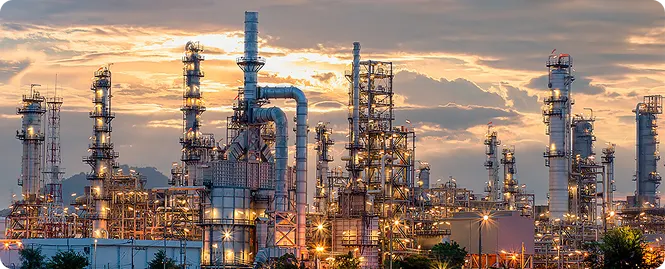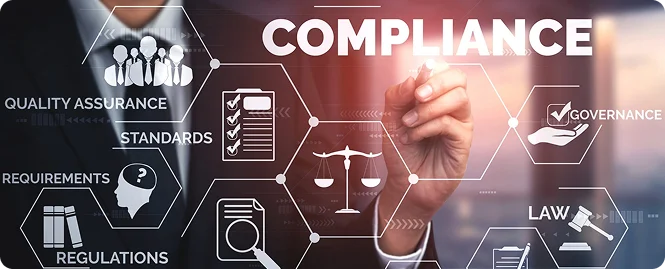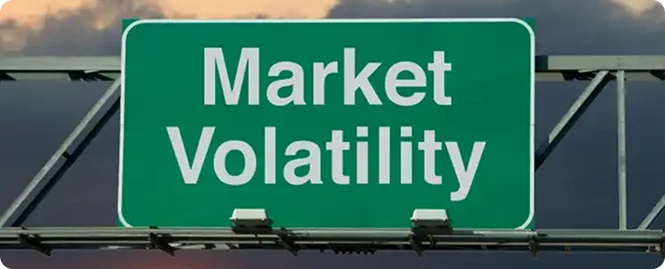How to Manage Risk Effectively for Your Gas Station
Table of Contents
Key Takeaways
-
Gas stations face various risks, including theft, fire hazards, environmental concerns, and employee safety challenges. Recognizing these threats early helps owners implement effective risk-prevention strategies.
-
Installing surveillance systems, securing storage tanks, and training employees in emergency response can significantly reduce risks and improve overall safety.
-
Staying up to date with local, state, and federal regulations ensures legal operation, prevents fines, and protects the business from liability.
-
Proper fuel storage, leak detection systems, and monitoring of fuel price fluctuations help minimize financial and environmental risks.
-
Developing emergency response plans, conducting regular risk assessments, and updating strategies help gas stations stay resilient against evolving threats.
Running a gas station involves managing various risks affecting safety, profitability, and long-term success. Gas station owners must implement strong risk management strategies, from theft and regulatory compliance to fire hazards and environmental concerns. Proper risk prevention in gas stations helps minimize financial losses, ensures employee and customer safety, and maintains smooth operations. By proactively identifying and addressing risks, gas station owners can protect their investments, build a reliable reputation, and ensure long-term business sustainability.
Neglecting gas station risk management can lead to severe financial, legal, and safety consequences. Theft and security breaches can result in significant losses, while improper fuel storage increases the risk of fires or environmental hazards. Failing to comply with regulations may lead to fines or business shutdowns. Employee injuries or workplace accidents can also result in lawsuits and insurance claims. Without proper risk management, gas stations face operational disruptions and reputational damage, jeopardizing long-term success.
Identifying Common Risks at Gas Stations
Gas stations face various risks impacting safety and compliance. Identifying these risks is crucial for effective management. Below are some of the most common risks gas station owners should address:
Theft and Robbery
Gas stations handle large amounts of cash, which makes them prime targets for risks like theft and robbery. Proper security measures can deter criminals, such as surveillance cameras, alarm systems, and well-lit areas. Training employees on safety protocols and cash-handling procedures helps minimize losses and ensures a safer work environment.
Fire and Explosion Hazards
Fuel stations store highly flammable substances, increasing fire and explosion risks. Strict safety measures are essential, such as leak detection systems, fire suppression equipment, and proper fuel-handling training. Regular inspections of pumps and storage tanks can help prevent hazardous situations that could endanger employees, customers, and surrounding areas.
Environmental Risks
Gas stations must comply with environmental regulations to prevent fuel spills and soil contamination. Properly maintaining underground storage tanks, implementing spill containment procedures, and regularly monitoring for leaks can mitigate risks. Failing to manage environmental hazards can lead to hefty legal penalties, costly cleanups, and damage to the station’s reputation.
Employee Safety
Ensuring a safe work environment for gas station employees is essential to prevent workplace injuries. Employees should receive training on handling hazardous materials, responding to emergencies, and de-escalating confrontational situations. Installing safety measures like panic buttons, proper lighting, and clear exit routes can help minimize workplace accidents and security threats.
Regulatory and Compliance Risks
Gas stations must adhere to various federal, state, and local regulations regarding fuel storage, environmental protection, and labor laws. Non-compliance leads to heavy fines, legal actions, and business disruptions. Staying updated on industry regulations, conducting regular audits, and training employees on compliance procedures maintain lawful operations and avoid costly penalties.
Developing a Comprehensive Risk Management Plan
A well-structured risk management strategy is essential to ensuring the safety, profitability, and longevity of a gas station. By identifying potential threats early and implementing preventive measures, station owners can reduce financial losses, enhance employee and customer safety, and maintain compliance with industry regulations, ultimately securing long-term success.
Conducting thorough risk assessments helps identify hazards that could impact operations. Prioritizing risks based on severity and likelihood allows owners to allocate resources effectively. High-risk areas like fuel storage, cash handling, and security threats should receive immediate attention, while lower-priority concerns can be managed with routine monitoring and preventive measures.
Once key risks are identified, establishing clear protocols is crucial for minimizing their impact. Security systems, employee training, and emergency response plans help prevent theft, fires, and compliance violations. Regular equipment maintenance and adherence to safety standards further strengthen risk management, ensuring smooth operations and reducing potential liabilities for owners.
Enhancing Security Measures
A strong security system helps deter risks like theft and ensures safety at gas stations. Installing high-quality surveillance cameras, alarm systems, and motion detectors helps monitor activities in real time, discourage criminal behavior, and provide crucial evidence in case of incidents. This way, both employees and customers stay protected.
Proper lighting is a simple yet effective security measure that enhances visibility and reduces crime risk. Well-lit fueling stations, parking lots, and convenience store entrances create a safer environment for customers and employees while discouraging any potential threats. Motion-activated lighting further helps increase efficiency by illuminating areas only when needed.
After-hours security is crucial for gas stations that operate late at night or 24/7. Using monitored surveillance, panic buttons, and secure employee procedures minimizes risks during low-traffic hours. Limiting cash on hand, locking non-essential areas, and coordinating with local law enforcement help prevent robberies and ensure a safer workplace.
Safety Training for Employees
Proper training helps ensure that gas station employees understand safety protocols when handling fuel and other hazardous materials. Regular sessions on spill containment, fire prevention, and proper equipment use minimize risks. Employees should also be trained in emergency shutdown procedures to respond quickly in case of leaks or accidents.
Educating the staff on identifying any suspicious activities and potential threats further helps in preventing crime. Employees should be trained to recognize loitering, unusual transactions, or aggressive behavior. Procedures such as discreetly alerting security or law enforcement can protect employees, customers, and assets while maintaining a safe working environment.
Fire drills and emergency response training equip employees with the knowledge needed to handle fires, explosions, or fuel leaks. Regular drills ensure quick and coordinated responses, reducing panic during actual incidents. Training should cover evacuation procedures, fire extinguisher use, and first-aid measures to enhance workplace safety and preparedness.
Maintaining Equipment and Infrastructure
Routine inspections help identify wear and tear, leaks, or malfunctions in fuel pumps and storage tanks before they become hazardous. Preventive maintenance ensures compliance with safety regulations, reduces environmental risks, and minimizes the chances of costly accidents that could disrupt operations and put employees and customers at risk.
Gas stations must readily have functional safety equipment to handle unexpected emergencies without panic. Regular checks of fire extinguishers, spill containment kits, and emergency shut-off valves ensure quick response in case of fires or fuel spills. Properly maintained equipment helps prevent minor issues from escalating into major safety hazards.
A structured maintenance plan helps extend the lifespan of gas station equipment and reduce unexpected breakdowns. Scheduling routine inspections and servicing for fuel dispensers, underground tanks, and ventilation systems further prevents service disruptions, ensures safety compliance, and helps avoid expensive emergency repairs that could impact business operations and profitability.
Managing Environmental Risks
Establishing a clear spill response plan is useful in minimizing environmental damage and safety risks. Gas stations should equip their employees with spill containment kits, train them on emergency procedures, and establish clear cleanup protocols to quickly contain any leaks, reducing risks to both the business and the surrounding area.
Gas stations generate hazardous waste, including used oil, fuel residues, and contaminated materials. Proper disposal practices, such as working with certified waste management services, prevent soil and water contamination. Compliance with environmental laws helps avoid hefty fines, legal issues, and reputational damage while promoting long-term sustainability.
Advanced detection systems, such as underground tank monitoring and vapor recovery technology, help identify leaks early. Real-time alerts enable gas station owners to take immediate action, preventing costly environmental damage and ensuring compliance with fuel storage regulations. Regular system checks ensure continuous monitoring and reduce the likelihood of undetected contamination.
Compliance with Local, State, and Federal Regulations
Adhering to local, state, and federal regulations is crucial for running a gas station safely and legally. This includes having proper fuel storage, environmental protection measures, and compliance with worker safety standards. Failure to meet these requirements may further lead to legal trouble, hefty fines, or even business shutdowns.
Regulatory requirements and industry standards are constantly evolving, making it essential for owners to stay informed. Regularly monitoring updates on fuel handling, environmental laws, and workplace safety ensures compliance. Attending industry workshops, consulting with regulatory experts, and reviewing official guidelines can help businesses adapt to changes and avoid legal issues.
Routine audits help gas station owners identify any potential compliance issues before they lead to fines or legal trouble. Regular inspections of fuel storage, safety equipment, and employee practices ensure adherence to regulations. Keeping detailed records and promptly addressing violations can protect the business from costly penalties and liabilities.
Managing Fuel Prices and Market Volatility
Fuel prices are highly volatile, influenced by global supply chains, geopolitical events, and economic conditions. Sudden price hikes or drops can significantly impact a station’s profitability, making it difficult to maintain steady revenue. Operators may struggle with financial strain without a risk management strategy, leading to increased operational risks. Implementing a proactive approach—like monitoring fuel market trends and adjusting pricing strategies—can help gas station owners stabilize revenue, reduce exposure to financial losses, and maintain competitiveness.
To mitigate risks from fuel price fluctuations, gas station owners must optimize their inventory levels and establish long-term contracts with reliable suppliers. Bulk purchasing at favorable rates, leveraging hedging strategies, and maintaining diversified supply sources can help stabilize costs. Regularly tracking market trends allows businesses to adjust pricing strategies accordingly. Implementing fuel management software ensures efficiency, minimizes losses, and enables owners to make data-driven decisions to maintain profitability despite unpredictable market conditions.
Creating an Emergency Response and Crisis Management Plan
A well-structured crisis management plan is essential for gas stations to handle emergencies such as fires, natural disasters, or accidents. This plan should outline immediate response actions, evacuation procedures, and coordination with emergency services. By preparing in advance, gas station owners can minimize damage, protect lives, and maintain business continuity.
Establishing clear communication protocols helps ensure that employees and customers receive timely instructions during emergencies. Staff should be trained on emergency procedures, including using intercom systems, alarms, and emergency contacts. Having predefined roles and responsibilities helps maintain order, reduces panic, and ensures a swift and effective response to critical situations.
A crisis management plan should not remain static. Regular reviews, drills, and updates ensure it stays relevant to evolving risks and regulatory changes. Station owners should assess past incidents, incorporate new safety technologies, and refine protocols to enhance preparedness. Continuous improvement strengthens response capabilities and safeguards both employees and customers.
Reviewing and Updating Risk Management Strategies
Risk management is not a one-time effort; it requires continuous assessment and adaptation. Evaluating safety protocols, security measures, and compliance standards regularly ensures that gas station owners stay ahead of potential threats. A proactive approach helps minimize liabilities, protect assets, and maintain a safe and profitable business.
As the industry evolves, new sorts of risks and challenges arise. Monitoring the effectiveness of existing risk management strategies allows businesses to identify gaps and adjust their tactics. Whether it’s implementing new security technology or refining emergency response protocols, staying flexible ensures better protection against potential threats.
Employees and customers are valuable sources of insight when it comes to identifying risks. Encouraging open communication and honest feedback helps pinpoint any overlooked hazards and areas for improvement. Gas station owners can create a more secure and efficient operational environment by actively involving staff and patrons in safety discussions.
Conclusion
Managing risks is crucial for ensuring a gas station's safety, profitability, and sustainability. A strong risk management plan helps prevent risks like theft, accidents, environmental hazards, and regulatory issues. By proactively addressing these risks, gas station owners can protect employees, customers, and business operations while maintaining compliance with industry regulations.
Gas station owners should actively implement and maintain a risk management strategy for securing long-term success. Regular assessments, employee training, and updated security measures help minimize threats. Staying adaptable to industry changes and emerging risks ensures a safer and more efficient business, reducing financial losses and improving overall operational stability.
Despite best efforts, some risks are unavoidable, making insurance a crucial step towards safety. Comprehensive coverage protects against financial losses due to accidents, property damage, liability claims, or environmental issues. Having the right policies ensures gas station owners can recover quickly from setbacks and continue operating confidently.











